This heartfelt piece was written by our member, Divine, as she shares her reflections on The Female Legacy Project held in Chennai this April.
A Conversation & a Question of Visibility
“Women’s stories are often forgotten or hidden purposefully,” said Nivedita Louis, as I sat at the back of the room at Alliance Française. Just moments before, she asked a question that stirred deep reflection: “Can you name any great leaders who shaped Tamil Nadu’s politics?” The list of names was overwhelmingly male. Then she asked, “Can you name any great women leaders of our state?” and another set of list followed. Her point was clear—women’s stories are often brought to light only when we are specifically asked to think about them. She emphasized the need to localize history and insisted that women’s stories must be written by women. Which is exactly what “the female legacy project” is all about.
Presented by the Goethe-Institut, Chennai, in association with Shreya Nagarajan Singh – SNS Arts Development Consultancy and The Kala Collective, and in collaboration with the Alliance Française of Madras, the exhibition honoured the lives and legacies of three extraordinary performing artists: Bharatanatyam dancer Narthaki Nataraj, shadow puppeteer Seethalakshmi, and Tamil theatre artist Usha Rani. Their untold stories were brought to life by photographer duo Bhuvana Sekar and Habiba Begum (members of The Kala Collective), illustrator Sahitya Rani, and writer Saritha Rao, under the mentorship of acclaimed theatre artist A. Mangai.
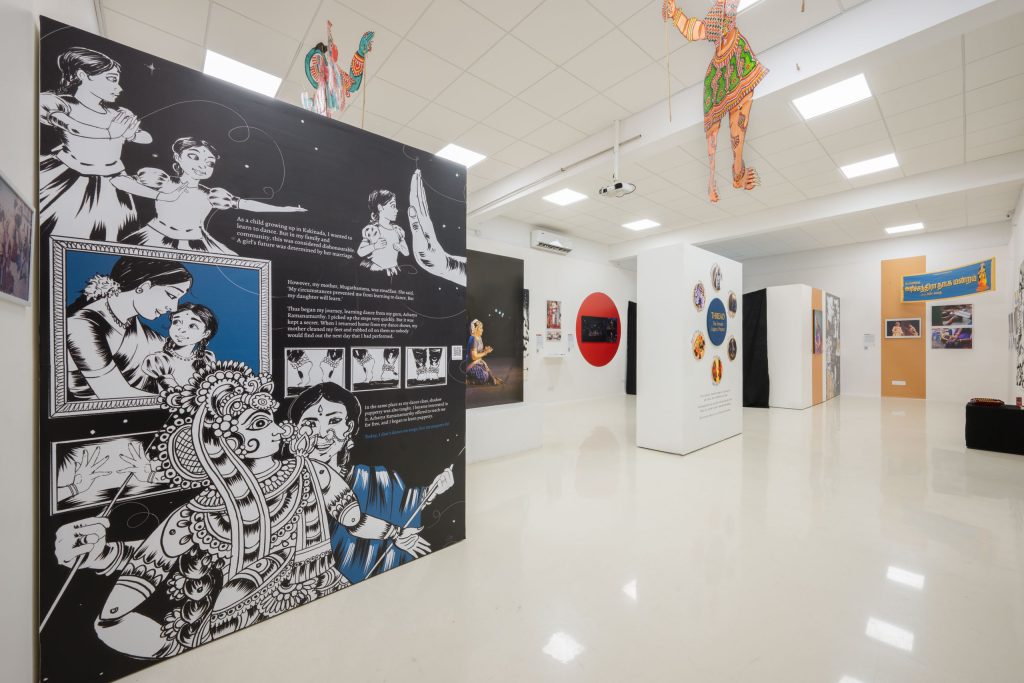
Pic Credit: BRS Sreenag
Women in History
Throughout history, women’s voices have often been marginalized—silenced, erased, or ignored. To create under a patriarchal system meant navigating between silence and survival. Even today, women struggle to tell their stories. It’s not just about allowing women to speak—it’s about whether society is ready to listen without trying to reshape them into a more acceptable form. When women reclaim their narratives, they aren’t just making noise—they’re reshaping the very fabric of history.
More Than Just an Exhibition
What made the experience truly memorable was the interactivity of the entire exhibition. It wasn’t just something to witness. It was something to participate in. From immersive storytelling displays to guided tours, hands-on workshops, and community conversations, the exhibition invited every visitor to reflect, respond, and create.
At the heart of The Female Legacy Project lies a vital question: What defines art, and who gets to be seen as an artist? Especially in the mainstream media? Artists like Seethalakshmi and Usha Rani are barely traceable—there is almost no digital footprint, no searchable archive, no visibility. Their erasure isn’t because of a lack of talent, but because their contributions haven’t been documented or celebrated. Media landscape often privileges mainstream visibility, women—especially those in traditional, regional, or community-rooted forms of art are routinely pushed to the margins. This is why exhibitions like The Female Legacy Project are so crucial. They reclaim space, write into history what has been overlooked, and offer these artists the visibility they truly deserve. Projects like this reclaim space, correct erasure, and expand our idea of who gets to be celebrated.
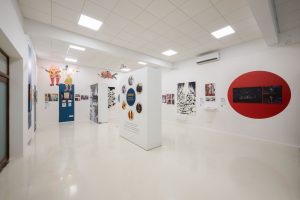
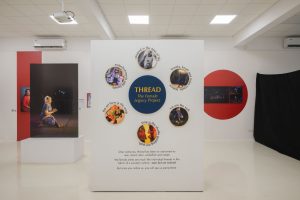

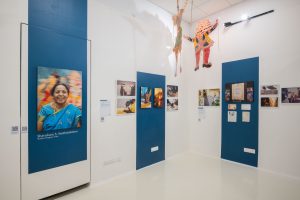
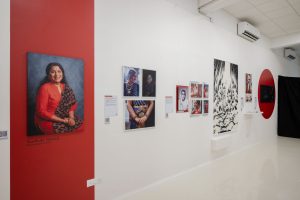
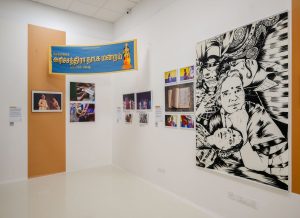
Pic Credit: BRS Sreenag
Art as a Platform for Dialogue
One of the most powerful moments was Pani Thee, presented by Marapachi, directed by A. Mangai, and performed by Thilagavathi Palani. A contemporary Tamil play in the Koothu style, it reimagined the Mahabharata story of Amba and Shikhandi with bold feminist insight. Koothu Makeup Workshop, also led by Thilagavathi Palani was transformative. Participants wore traditional makeup—bold strokes and colors, bringing rural art into urban consciousness.
A jewelry-making workshop blurred the line between craft and tribute. From Virginia Woolf to Frida Kahlo, feminist icons were reimagined as DIY jewelry. Parallelly, Strike A Pose, a portrait session by photographers Bhuvana Shekhar and Habiba Begum. Participants were encouraged to bring along women they found inspiring—mothers, sisters, mentors, friends—and have their portraits taken. The session turned into a moving tribute not to historical figures, but to everyday women who shape lives quietly and courageously. It was beautiful, tender, and full of celebration of womanhood.
The final day brought us into the world of words with the writing workshop “Pen Kondru Pen’mai’yai Ezhuduvom”. Writer Nivedita Louis introduced the Indian Ladies Magazine and the legacies of forgotten women writers. Sessions with Writers SV Sujatha, Kokila, Dr. Prema, Monisha was very empowering. By the end of it, we each walked away with a piece of writing, a piece of someone’s story, a piece of ourselves. This exhibition wasn’t about placing women in galleries. It was about bringing women’s voices into the center—in paint, in performance, in portraits, in poetry. This exhibition wasn’t about placing women in galleries. It was about bringing women’s voices into the center—in paint, in performance, in portraits, in poetry.
Throughout the week, the exhibit became a living space of dialogue and memory. The storytelling was intimate—with installations, AV content, and community interactions. . As you leave the venue, a question lingers “How many female artists can you name?”
As you leave the venue, a question lingers
“How many female artists can you name?”
Art has power. Art remembers. And through this project, we were all reminded of the women who performed, created, and persisted—often without applause, without credit, and without archive.I doubt if I have covered the legacy project to its true essence of what impact it had created. But by the end of this, I left with names. A notebook full of names—unfamiliar, nearly forgotten, and almost lost. But now they are etched in memory. And maybe that’s how change begins—with remembrance.
About the Author
Divine Rizia R V is an Assistant Professor in the Department of Visual Communication at Loyola College, Chennai. With a background in art, photography, and graphic design, she bridges industry experience with academia. Her primary focus is on understanding the multifaceted realities of society through the lens of Film, Digital Media, and other Visual Media.
